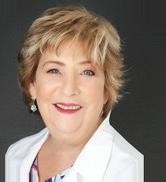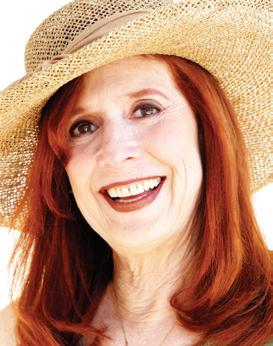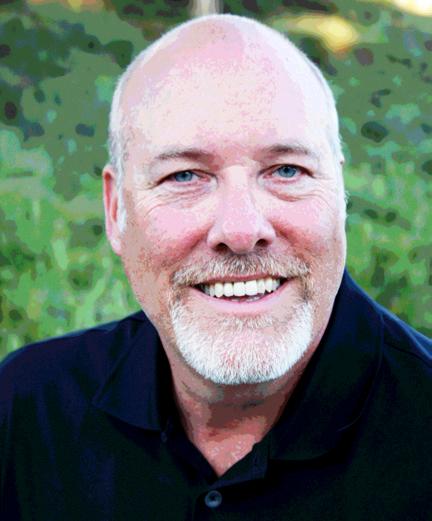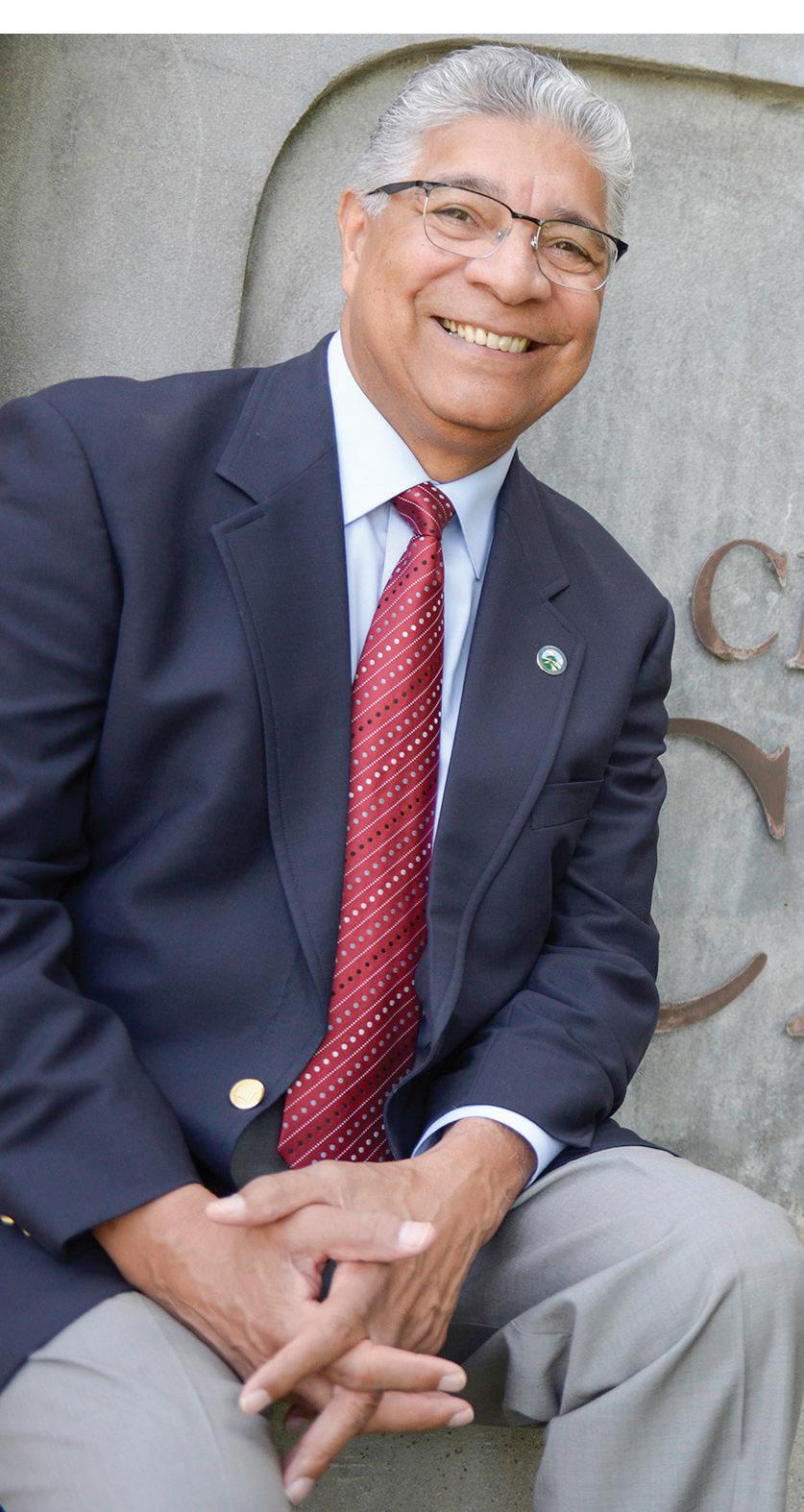

































































































It seems like only yesterday that we rang in 2022. Now the year is quickly coming to a close. Before the mad rush of the holidays enjoy these Santa Clarita Valley and southern California activities and events in November.
Nov. 11-13
Six Flags Magic Mountain Veteran’s Weekend 26101 Magic Mountain Parkway, Valencia 91355
Info bddy.me/3VsZwn5
Honor all who have served this Veteran’s Day. Six Flags Magic Moun tain will honor veter ans and active military during Veteran’s Week end Nov. 11-13.
On November 11-13, Six Flags Magic Mountain will honor and celebrate all who served. Veterans, active duty and retired military personnel will be given complimentary park admission and more with valid military ID.

A valid military ID must be presented at the designated parking toll booths for complimentary parking.
Veterans, active duty and retired military person nel are eligible to receive:
• Park admission and parking
• Meal voucher and drink bottle
• Americana lanyard and button
Family of veterans, active duty and retired mili tary personnel are eligible to receive:
• Discounted Park admission, discounted drink bottle and button.
Valid Military ID is required, and all redemp tions will take place at the front gate. The park is open 10:30 a.m. – 8 p.m. Nov. 11- 12 and 10:30 a.m. – 7 p.m. on Nov. 13.


Burbank Wine Walk and Street Fair E. Palm Avenue and N. San Fernando Boulevard, Burbank 91502
Info burbankwinterwinewalk.com.
The Most Magical day of the year in Burbank will kick off with the Holiday Street Fair from noon-8 p.m. on San Fernando Boulevard with hundreds of local vendors selling a wide variety of crafts and goods. There will be artists, non-profit organiza tions, crafters, live music and food/drink vendors.
You do not need a Wine Walk ticket for the Street Fair.
The Wine Walk will run from 4 p.m. to 7 p.m. and feature more than 40 General Admission tast ing locations throughout downtown Burbank. Each guest will receive a tasting cup and a map of the participating tasting sites.
As you stroll down San Fernando Boulevard you will be surrounded by a winter holiday ambiance of live entertainment and beautiful holiday lighting.
Nov. 18-20
20th Annual Festival of Trees Canyon Country Community Center, 18410 Sier ra Highway, Canyon Country 91351
Info scvbgc.org/festival-of-trees-santa-clarita; $10 adults, $5 children, $5 seniors and military.

The 20th Annual Festival of Trees, benefiting Boys & Girls Club of Santa Clarita Valley will be held Nov. 18-20 at the Canyon Country Communi ty Center.

Elaborately designed holiday trees will be on view. A crowd favorite is the Gingerbread Village, where culinary artisans showcase amazing ginger bread creations. There will be children’s crafts, San ta, live entertainment by various local dance groups
and more.
Highlights of this year’s festival include the ele gant Magic of the Lights Gala on Friday, Nov. 18, the Holiday Hocus Pocus Magic show on Nov. 19 at 7 p.m. and the Jingle Jam Swing on Nov. 20. Sepa rate admission applies to these events.
Nov. 19
Light Up Main Street
Old Town Newhall
Info oldtownnewhall.com
Join the City of Santa Clarita ring in the holiday season with Light Up Main Street from 5-8 p.m.
Enjoy live music throughout the night and the tree lighting ceremony at 5:50 p.m.

Start your holiday shopping at the Maker’s Mar ketplace or visit many of the local shops up and down Main Street. There will be an Elves’ Arts and Crafts Workshop for the kids and a snow zone. While there are many activities, there will also be a Chill Zone where you can relax with senso ry-friendly activities.
Nov. 20
The Combat Radio Christmas Carol Event
The Canyon Santa Clarita, Valencia Town Cen ter, 24201 Valencia Blvd., Suite 1351, Valencia, 91355
Info wheremusicmeetsthesoul.com
The Combat Radio Christmas Carol Event is a 1940’s style audience-interactive, radio, comedy broadcast/reading of “A Christmas Carol” in the spirit of “Prairie Home Companion,” featuring tal ent from some of your favorite films and TV, like “Fear The Walking Dead,” “Big Bang Theory,” “Bat man,” “The Black List,” “Star Trek Lower Decks,” “Highlander,” “Arrow,” “The Mandalorian,” “Assas sin’s Creed,” “Voltron,” “The Hulk” and more.
In 1961 legendary animator Walt Disney and his brother, Roy O. Disney, guided the merg er of the Los Angeles Conservatory of Music, founded in 1883, and the Chouinard Art In stitute, founded in 1921, to become the California Institute of the Arts.
It was the first degree-granting institution of higher learning in the United States created specifi cally for students of both the visual and performing arts.
“CalArts is the principal thing I hope to leave when I move on to greener pastures,” Walt Dis ney said. “If I can help provide a place to develop the talent of the future, I think I will have accom plished something.”
Following Disney’s death in 1966, the Disney family and other benefactors worked to execute his vision of CalArts.
The groundbreaking for the CalArts Valen cia campus was held in 1969. Construction be gan on the centerpiece of the campus, a five-level, 500,000-square-foot “mega-building” designed by architects Ladd & Kelsey.

CalArts’ first classes were held at an interim cam pus in Burbank in 1970.
After several construction delays due to weather and the 1971 Sylmar Earthquake, CalArts started its fall semester in Valencia in November 1971 with 650 students.
Today the CalArts campus hosts six world-re nowned schools dedicated to the arts including Critical Studies, Dance, Film/Video, Art, Music and Theater.


As it turns 50, CalArts is now old enough to look at its past while also looking to its future, said Ca lArts President Ravi Rajon.
Rajon replaced long-time president Steve Levine who stepped down in May 2017 after 29 years as CalArts president.
“For many years CalArts was the ‘young thing,’ it was new, it was the ‘cool thing.’ What is good about 50 years is that now we can look back and look for ward,” he said.
Rajon said a hallmark of the CalArts community has always been experimentation.
“It’s what CalArts has always been about,” he said. “That is really at the heart of what we do and that hasn’t changed. So much has changed in society in the past 50 years, but experimentation has been the constant and it keeps evolving.”
Rajon said the COVID-19 pandemic was a test for the institution.
“But here we are today arguably stronger than we were before the pandemic,” he said. “I think how CalArts fits into the world is even more important than it was before.”
Rajon reflected on the 50 years of CalArts alums, which number more than 14,000 and the influence CalArts has had on the world, not only in the arts.
“Our alums have had an outsized impact. If you think of all they have made happen, in art, in fine art, in music, in theater, in dance and most obvi ously in animation,” he said.
People isolated during the pandemic turned to entertainment for comfort and distraction. Artists and companies with ties to CalArts created much of that entertainment.
“We have just experienced how important that work is,” Rajon said. “Most people probably read
something every day, or watched something every day. Someone had to write it, someone had to shoot it, someone had to direct it, to edit it.”
Janet Sarbanes, a CalArts faculty member since 1999 in Critical Studies, said she was attracted to CalArts because of the multi-disciplinary culture.
“I’ve always been interested in the making, as well as the studying of art,” she said. “CalArts al ways had a reputation of being an innovative and creative school. That really appealed to me.”
Sarbanes is also an amateur historian of CalArts.
“CalArts brought together two utopian visions, Walt Disney’s vision and the vision of the first fac ulty that was mostly recruited from the New York avant-garde,” she said. “That faculty was really in terested in pushing the definition of what an art school was, and of school in general.”
Sarbanes said Disney wanted to create an insti tute much like Caltech where scientists come to gether in a collaborative environment across disci plines to work on problems.
Sarbanes said what eventually evolved at CalArts was not only a culture of experimentation and col laboration, but also the CalArts philosophy to ac cept students as artists the moment they enter the school.
“Faculty works with students to explore what they need to develop their visions,” she said.
Sarbanes said each school at CalArts has received acclaim throughout the past 50 years.
“There’s an incredible legacy in each school and across the institute,” she said. “There’s always some thing very exciting going on at CalArts.”
A Miracle David Roitstein, director Jazz Program SpecialAccording to the Beverage Trade Net work California is the largest wine producing region in the United States with more than 1,200 wineries and 107 different American Viticultural Areas.
California produces 90% of all wine produced in the U.S. and ranks No. 4 worldwide in terms of overall wine production.
That’s a lot of wine to taste and savor.
There are four wine producing regions in Cal ifornia, the North Coast, Central Coast, Central Valley and South Coast.
The North Coast is home to some of California’s most award-winning wines. But don’t overlook the Central Coast when planning your wine tasting getaways.
For a weekend close to home the Ventura Wine Trail is the perfect place to start.

While not as famous as Napa, agricultural Ventu ra County had long been home to wine grapes and wineries. The variety of minerals in the soil and the cold air that blows in from the ocean make the region well suited for Pinot Noir and Chardonnay, but Syrah and Cabernet Sauvignon are also stars.
Get a taste of Ojai Valley’s offerings at Boccali Vineyards & Winery, Topa Mountain Winery and The Ojai Vineyard. Ojai is also home to the Central Coast’s first organic winery, Casa Barranca.
Topa Mountain Winery 821 W. Ojai Ave., Ojai 93023
Info www.topamountainwinery.com
Just outside downtown Ojai with scenery framed by the Topa Topa Mountain Range, you will find a perfect place to enjoy a glass of handcrafted wine. Since opening its doors in 2016, Topa Mountain Winery has become one of the more popular tast ing spots in Ojai. Reservations recommended.
Boccali Vineyards & Winery
3277 E. Ojai Ave., Ojai 93023
Info www.boccalivineyards.com
This family-owned and -operated winery offers samples of estate-grown Syrah, Cabernet Sauvi gnon and Zinfandel … all grown, produced and bottled in the Ojai Valley. The tasting room is in the vineyard’s family-run Italian restaurant. Sit be neath the oak trees and take in the beauty of Ojai’s famous “East End.” Tastings Saturdays and Sun days, noon to 5 p.m.
The Ojai Vineyard Tasting Room 109 S. Montgomery St., Ojai, 93023
Info ojaivineyard.com
The wines made by The Ojai Vineyard are a cul mination of four decades pursuing excellence with fruit grown in the region. From Stockholm to New York, their wines are poured in the finest restau rants. The tasting room offers more than 300 wines to enjoy. Open daily.
Casa Barranca Organic Wines 208 E Ojai Ave., Ojai 93023
Info casabarrancawines.com
Casa Barranca was the first organic winery on the Central Coast. Enjoy tastings in the winery’s Craftsman-inspired tasting room in the heart of historic downtown Ojai. Open daily.
Find Kosher wines, barrel tastings and a villa-in spired tasting room at Oxnard/Camarillo wineries.
Herzog Wine Cellars
3201 Camino Del Sol, Oxnard 93030 Info herzogwine.com
From a winemaking history that survived the courts of Kaiser Franz Joseph of the Austro-Hun garian Empire, to a Europe torn by war, to the streets of New York City and finally to the vine yards of California, the Herzog family’s amaz ing story is rivaled only by the quality of their award-winning Kosher wines.
Enjoy artisan wines and five-star cuisine at Her zog Wine Cellars. Open Sunday through Thursday.
Magnavino Cellars
961 N. Rice Ave., Suite 5, Oxnard 93030
Info magnavinocellars.com
There is always something going on at Magnavi no — winery tours, winemaker dinners, special tastings, cupcake pairings, vertical tastings, holiday boutique or live music in the winery’s villa-inspired tasting room. Open Fridays, Saturdays, Sundays.
Cantara Cellars
126 Wood Road # 104, Camarillo 93010
Info cantaracellars.com
Known for a broad selection of award-winning red and white wines, the winery offers barrel tast ings of its vintages paired with cheeses and other snacks served in a low-key lounge area. Open daily.
Ventura
The city of Ventura is home to numerous tasting venues, many located just minutes from each other in downtown Ventura.
Four Brix Winery and Tasting Room
2290 Eastman Ave # 109, Ventura 93003
Info fourbrixwine.com
Four Brix Winery opened in 2011. This craft winery located in the heart of Ventura specializ es in internationally-inspired wine blends. With a total production of around 2,500 cases, their wines are in high demand. Relax in the “The BrixHouse” tasting room that offers music most weekends and enjoy a tasting flight, as well as a charcuterie platter or a pizza. Open Fridays, Saturdays and Sundays.
Plan B Wine Cellars
3520 Arundell Circle #107, Ventura 93003
Info planbwinecellars.com
Plan B Wine Cellars is a high-end craft winery specializing is red varietals. Open Saturdays and Sundays.
Panaro Brothers Winery
4517 Market St., Suite 7, Ventura 93003
Info panarobros.square.site
As fifth generation Italian-American winemak ers, the Panaro family and their winery enjoy mak ing Central Coast grapes into single-varietal and blended wines. This small artisan winery in mid town Ventura features more than 20 varietals in both red and white wines. Open Fridays, Saturdays and Sundays.
As with many celebrations, Halloween is steeped in traditions — many of which can be traced back quite some time. Since Halloween is believed to have originated from Celtic pagan, ancient Roman and early Christian events, its traditions are varied. The following is a deep look at some old traditions associat ed with Halloween.

Historians trace many traditions of Halloween to a Celtic holiday known as Samhain (pronounced sow-in). The Celts lived 2,000 years ago in parts of what is now Northern France, Great Britain and Ireland.
During Samhain, people believed that the door between the worlds of the living and the dead was blurred.
On Samhain, Celts believed the ghosts of the dead returned. Also, Druids made predictions about the future at this time of year. It was cus tomary to build large, sacred bonfires and burn crops and other sacrifices to the Celtic deities.
While large bonfires are not typi cally part of Halloween celebrations today, revelers can light fire pits in their yards that are reminiscent of an cient celebrations.
Come Halloween, tele vision networks and streaming services offer their curated takes on frightening flicks worth watch ing. Some are horror masterpiec es and others campy classics.
Here are some recently released horror movies and others slated for release in the months to come.
Scream Neve Campbell, Court eney Cox and David Arquette re turn to reprise roles they made famous 25 years ago. A new killer dons the “ghostface” mask

Christianity spread throughout Celtic regions and blended with other rituals. Pope Gregory III expanded on a holiday Pope Boniface IV estab lished to honor Christian martyrs to include all saints and martyrs.
All Saints Day on November 1 commemorates the venerable saints, and All Souls Day on November 2 celebrates loved ones who went on to eternal rest.
All-Hallows Eve (Halloween) was a time to pay homage to the dead. Poor children would go door to door in more affluent neighborhoods offering to say prayers for residents’ deceased loved ones in exchange for some food or money. This was known as “souling,” which became the basis for trick-or-treating. Later the tradition became known as “guising” in areas of Scotland, where children would go around in costumes.
Images of witches riding broom sticks are everywhere come Hallow een, and witch costumes remain a standard. Almanac.com indicates that, during the Middle Ages, women who practiced divination were dubbed “witches,” from the Anglo-Saxon word “wicce,” or “wise one.”
and terrorizes a California town. Screams undoubtedly ensue.
Hellbender A teen and her moth er reside in the woods and pur sue a passion for making music. A chance encounter with anoth er teen has Izzy learning about a connection between her family and witchcraft, which causes a rift with her mother.
Texas Chainsaw Massacre: The sequel to the 1974 hit arrives streaming on Netflix. A new group of victims unknowingly dis rupt Leatherface’s home and are in for a gruesome surprise.
Fresh Noa finally meets what ap
It was believed the witches could go into a trancelike state, and would do so in front of their fireplaces. Super stitious people believed the witches could fly out of their chimneys on broomsticks and terrorize others with magical deeds.

Bobbing for apples is not quite as popular as it once was, as more peo ple have become concerned about spreading germs. The Roman festi val Pomona honored the goddess of fruits and orchards. It occured about November 1.
Romans believed the first person to catch a bobbing apple with his or her teeth would be the first to marry.
pears to be the ideal guy in Steve during a meet-cute in the super market. They exchange numbers and begin a relationship, plan ning to head away for the week end. The rosy glow of their rela tionship soon extinguishes when Steve’s warped desires come to the surface.
The Requin A romantic trip goes south when a couple’s villa is swept to sea during a storm. The couple is forced to do what it takes to survive. The added hor ror comes from sharks circling them below.
It also was believed apple peels con tained the secrets to true love.
Removing the insides of pumpkins and carving them into funny or fear some faces may be messy work, but it’s tradition on Halloween.
Turnips were the material of choice in ancient Ireland, but were replaced by pumpkins when immigrants came to America. The “lanterns” were made with scary faces and lit to frighten away spirits.
Halloween is full of traditions, many of which have lengthy histories. (MC)

“Libraries store the ener gy that fuels the imagi nation. They open up windows to the world and inspire us to ex plore and achieve, and contribute to improving our quality of life.” — Sidney Sheldon
For many, walking through the doors of a library can be inspir ing, engaging and comforting. With thousands of books, programming throughout the year and staff ready to help you find your new passion project, or a book for research — the Santa Clarita Public Library is here for you.
What makes Santa Clarita so unique is the amount of programs, classes and opportunites we have for adults, teens and children at the Li brary, all at no cost. In the past few months, the Library started three new programs, each engaging with a dif ferent demographic in our City.
The first being the SCPL x CalArts Workshops. These niche classes in clude local students, grades 4-6 who are learning more about animation and zines, which is a type of artwork comprised of text and images.
This cohort works one-on-one with staff and alumni from the California Institute of the Arts to get hands-on experience and spark their imagina tion and creativity.
The next program that the Library launched is the Santa Clarita Youth Arts Initiative, which works with students at local junior high schools to teach them more about the arts. This two-year program give students the opportunity to find their passion from photography to creative writing, editing and sound mixing.
For the next three months, be on the lookout for free classes and events
related to our Connections Program. This grant-funded series looks to fos ter inclusivity by bringing residents together from all backgrounds, ages and abilities to participate in theater workshops, self-care classes and art exhibitions.

For those who want to get into the Halloween spirit, join us on Monday, October 31, for a ghoulishly good time at each of our Library branch es. Residents and families can come dressed in their best costumes, listen to a Storytime, go on scavenger hunts and more! For times and locations, please visit SantaClaritaLibrary.com/ events.
Another great way to enjoy the Library is by going to Trail Tales at Duane R. Harte Park at River Village.
Take a stroll and enjoy a story as you pass by 11 podiums positioned along the trail, each featuring a page from a short story.
Just this month, the Library up dated the podiums with a new book title — Thank You, Omu! This award-winning children’s book by Oge Mora helps generate gratitude and generosity through the simplest of acts. I hope you and your families can enjoy the beauty of the trail and have fun walking and reading this great story together.
With so many opportunities and resources at the Santa Clarita Public Library, I encourage our residents to try something new and participate in one of our programs, book clubs or crafts.
Make sure you follow the Santa Clarita Public Library (@scvpublic library) on Facebook, Instagram and Twitter to stay up to date on events and programs. To learn more, please visit SantaClaritaLibrary.com.
Ken Striplin can be reached at kstriplin@santa-clarita.com. The views expressed in his column are those of the City and do not necessarily reflect those of The Signal.
earlier due to space or inventory availability. Space is limited and savings are only available on select departures. Space is on a first come, first served basis. Offers are not valid on group or existing bookings. Offers are combinable with Member Benefits only. Offer is not combinable with Seasonal Offers, Hot Deals or Flash Sales. Promotional fares may remain in effect after the expiration date. Offer amounts vary by tour and departure date. Other restrictions may apply. Celebrity Cruises Offer: Up to $1,260 value per couple is based on category 2B veranda stateroom on the April 2, 2023 Celebrity Reflection® 7-day Eastern Caribbean sailing and comprises the total value of the following offers that may be found on a 7-day cruise: All Included offer (valued at $1,064 per couple) AAA Vacations® Amenities of $125 onboard credit per stateroom, and Celebrity Cruises $75 onboard credit per veranda stateroom Travel Sale offer. Travel Sale offer is valid on new bookings only made October 21 – November 5, 2022. All Included offer includes Classic Beverage Package with service charges, Wi-Fi, and gratuities. Offer value amounts may vary by length of sailing, sail date, stateroom category, based on availability, and are subject to change at any time without notice. Ask your AAA Travel Advisor for complete details of each offer. ©2022 Celebrity Cruises. Ships’ registry: Malta. AAA Travel Sale Gift Card offer (“Offer”) only valid on bookings made through Automobile Club of Southern California. Minimum purchase required to qualify for Gift Card offer. Maximum one (1) Gift Card offer per household. Offer is combinable with AAA Travel Sale offers only. Offer valid only on new bookings made on or after October 21, 2022, which are under full deposit no later than November 5, 2022, for travel commencing no later than March 31, 2023. Gift Card will be provided to lead client/trip payee following trip final payment. Bookings of $5,000 – $9,999 qualify to receive a $50 Gift Card; bookings of $10,000+ qualify to receive a $100 Gift Card. Valid only on cruise or tour bookings provided through one of AAA’s preferred travel providers; not valid on Fly/Drive packages. The program’s gift card merchants are subject to change at any time and are not endorsed by or affiliated with AAA, nor are such merchants considered sponsors or co-sponsors of this program, and AAA disclaims responsibility for any products or services purchased using a gift card provided under the program. Gift cards/certificates are subject to the issuing merchant’s terms and conditions. A U.S. address is required for delivery. AAA Travel Alert: Many travel destinations have implemented COVID-19-related restrictions. Before making travel plans, check to see if hotels, attractions, cruise lines, tour operators, restaurants and local authorities have issued health and safety related restrictions

‘The Banshees Of Inisherin’ (out of four) Searchlight Pictures presents a film written and directed by Martin Mc Donagh. Rated R. In theaters.
An air of melancholy hangs over the entire (fiction al) title island in “The Banshees of Inisherin,” a brooding and eccentric and darkly funny comedy/drama from the ma jestically creative Martin McDonagh, who reunites his “In Bruges” stars

Brendan Gleeson and Colin Farrell a decade and a half after they teamed up in that 2007 minor classic about a couple of hitmen caught up in surre al circumstances.
In “Banshees,” Gleeson and Far rell once again are pure movie magic together, with Gleeson’s gruff and rugged and imposing persona the perfect counterpart to Farrell’s hand
some and wide-eyed transparency, which at times borders on the, well, the not-too-bright. Earnest, but not too bright.
“The Banshees of Inisherin” is set in 1923 on a remote island off the west coast of Ireland, with a chop
py and unwelcoming body of water separating Inisherin from the main land, which is in the final throes of the Irish Civil War. The fighting is so close, the locals can see and hear the gunfire and cannons roaring across the way, and yet there’s the typical Irish air of “Eh, what can you do?” as they go about their daily business, resigned that even after the fighting stops, it’ll no doubt start up again.
There’s a lush but chilly postcard gorgeousness to the island, where Farrell’s Padraic lives in a small farm house with his sister, Siobhan (Kerry Condon of “Better Call Saul”), who spends her days cooking porridge and keeping the home clean and reading while Padraic tends to their small herd of cattle and keeps on in viting his beloved albeit stinky min iature donkey Jenny into the house, much to Siobhan’s frustration. Ani mals are for outside, she tells Padra ic, but in fairness, Jenny is about the most lovable miniature donkey in the history of Irish period-piece movies.
Every day at 2 p.m., Padraic shuffles off to the home of his longtime pal, Colm Doherty (Gleeson), and they head to the pub together for pints of stout and long conversations about nothing, and in the evening, Colm of ten takes out his fiddle and leads the locals in a session of song and maybe even dance. One such afternoon, how ever, Padraic’s knocks go unanswered, even though he can see Colm right there ignoring him while sitting in his house (which is filled with decor and tokens indicating Colm once lived, or dreamed of living, quite the life).
Later that day at the pub, Colm de livers the news to Padraic: They’re no longer friends. It’s nothing Padraic said or did, no offense he caused; Colm simply can’t take it anymore, can’t take the mind-numbing, soul-sucking hours spent in Padraic’s company. “I just don’t like you no more,” says Colm, and as far as he’s concerned, that’s that.
But Padraic is too stubborn, too loyal and perhaps too stupid to take the hint, and he keeps on trying with Colm, even after Colm threatens to start cutting off his own fingers, one at a time, for every instance of Padra ic buggin’ him. (Reminder: This is a film by Martin McDonagh, who once wrote a play about a man who
has been searching for his missing left hand for 27 years, whose films include “Seven Psychopaths” and “Three Billboards Outside Ebbing, Missouri.” Let’s just say Colm might not be engaging in hyperbole when he makes that finger threat.)
With the cinematographer Ben Davis delivering breathtaking visuals that create a lush but unsettling world of its own (the film was shot in the Aran Islands at the mouth of Galway Bay), “Banshees” weaves in a number of memorably unique characters, in cluding Peader Kearney (Gary Lydon) a cruel, alcoholic policeman who reg ularly beats his simple-minded son, Dominic (Barry Keoghan, making the part something special); a cackling old lady (Sheila Flitton) who roams the island like a prophet of doom, speak ing of impending death(s); and a nosy shopkeeper (Brid Ni Neachtain) who lives for negative gossip.
Nearly everyone on the island seems to be dealing with a form of depression; at times, they even talk about it, which is pretty revolution ary for 1920s Ireland. They all have different ways of coping with it, and there’s something heartbreaking about seeing the sadness envelope Padraic’s face when Colm tells him, again and again and AGAIN, that his quest for something approaching inner peace will die if Padraic won’t leave him the hell alone.
Many of the actors in the ensemble are veterans of McDonagh’s plays, and they’re strikingly good here, whether they have integral roles or they pop in for a single scene. Gleeson and Farrell make for a mesmerizing team, and yet it’s Kerry Condon in arguably the best work of her career who continu ally steals our attentions as Siobhan, who loves her brother dearly and wants to clobber Colm for his selfish ness, and yet realizes she has to get off this island, like, yesterday, to preserve her own sanity and save herself from becoming a Banshee of Inisherin.
This is one of the best movies of the year.
Copyright 2022 Chicago Sun-Times


Many have missed the opportunity to travel and experience the sights, sounds and tastes of the world, but it’s easy to explore oth er cultures and cuisines by experimenting in the kitchen. If you’re looking to transport your taste buds to the shores of Spain or the beaches of Greece, one of the best places to start is with the Mediterranean Diet. Renowned chef Geoffrey Zakarian recommends these tips to help home cooks el evate their dishes and easily incorporate the popular diet into everyday cooking.
Reach for Pantry Staples The Mediterranean Diet is high in vegetables, fruits, whole grains, nuts, seeds, olive oil and seafood. By keeping your pantry stocked with canned versions of ingredients like beans and fish you can easily add them to your favorite dishes.
Add Seafood Eating more seafood is one of the leading principles of the Med iterranean Diet. Tuna salad is one tried-and-true dish that can help incorporate fish into your menu. To make it more nutritious, opt for tuna that’s packed in ex tra-virgin olive oil, so you don’t have to add much mayo to the base. For exam ple, Genova Premium Tuna provides a tasteful addition to recipes and is high in protein, a great source of omega-3s and has a uniquely rich and savory flavor that offers a taste of the Mediterranean in every bite.
Visit GenovaSeafood.com for more recipe inspiration. (Family Features)
Prep time 15-20 minutes
Cook time 10-15 minutes
Servings
Genova Albacore Tuna in Olive Oil
balsamic vinegar


leaf
rosemary
capers, drained
juice only (about 1 1/2 table
raw vegetables, such as carrots, celery, cucumber spears, endive leaves, sliced fennel and bell pepper strips, for dipping Drain tuna, reserving 2 tablespoons oil.
In small saucepan, combine balsamic vinegar, bay leaf and rosemary sprig.
Bring to boil and reduce until syrupy, about 1 tablespoon. Let cool slightly; discard bay leaf and rosemary sprig.
In blender or food processor, process tuna and reserved oil, mayonnaise, capers, anchovies and lemon juice to make smooth dip. Transfer to flat serving bowl. Drizzle with balsamic syrup. Serve with raw vegetables.
Prep time 20-30 minutes
Cook time 20-25 minutes
Servings 4
2 cans (5 ounces each) Genova Yellowfin Tuna in Olive Oil, drained
1/2 cup pine nuts
4 cups arugula
1 garlic clove
2 tablespoons butter (optional)
1 cup grated Parmigiano-Reggiano, plus additional for garnish (optional)
2 lemons, zest only (optional)
1/2 teaspoon kosher salt
1/2 teaspoon freshly ground black pepper
3/4 cup extra-virgin olive oil
8 ounces whole-wheat orecchiette
1/2 cup jarred sun-dried tomatoes in oil, chopped
1/2 cup dates, pitted and quartered
1/4 cup kalamata olives, pitted and chopped
1/4 cup dill, chopped (optional)
1/4 cup parsley, chopped (optional)
Preheat oven to 325 F.
On a sheet tray, toast pine nuts 8-12 minutes, or until golden. Set aside to cool.
Bring large pot of salted water to boil. Prepare ice water bath by filling large bowl with cold water and ice. Stir arugula into boiling water and cook until bright green and tender, about 30 seconds. Drain arugula, immedi
ately shock in ice water and set aside to fully drain; cover with towel.
In blender or food processor, add arugula; garlic; pine nuts; butter, if desired; Parmigiano-Reggiano; lemon zest, if desired; salt; and pepper. Pu ree on high, incorporating olive oil to desired thickness.
Place pesto in bowl and cover tightly to avoid discoloring.
Bring large pot of salted water to boil.
Add pasta and return to boil, stirring occasionally. Taste pasta for done ness 2 minutes earlier than package instructions. Once cooked, drain and transfer to large bowl. Do not rinse.
Add pesto gently until evenly distrib uted. Fold in tuna, sun-dried toma toes, dates and olives.
Divide between shallow bowls and finish with additional Parmigia no-Reggiano, dill and parsley, if desired. (Family Features)
Queen Nation shows are an amazing vin tage re-creation of a classic rock concert honoring the iconic rock royalty legend ary band Queen.
They return to The Canyon to perform a show that regularly ends up as standing room only crowds. They put on an amazing true to life recre ation of an early 80s Queen concert in matching-era stage attire with their shows including all the classic Queen hits and more.
Queen Nation has some of the best musicians you
will see and hear who not only sound like Queen, but visually take you back to a time when Freddie Mercury, Brian May, Roger Taylor and John Deacon ruled the rock world.
Queen Nation’s lineup includes Mike McManus on guitar, an unbelievable guitar player who recre ates the sound of Brian May. Lead singer Gregory Finsley is considered by many tribute singers as the best of the best. His voice sounds eerily like Freddie Mercury in his prime.
On bass guitar is Parker Combs, who always gets
a rousing ovation when he starts the opening bass lines to “Another One Bites The Dust.” But the en gine that drives the Queen Nation machine is Peter Burke on drums and vocals.
You can see Queen Nation live at The Canyon Santa Clarita on November 26. Tickets are avail able online through AXS, over the phone at (888) 645-5006, and in person at the Canyon Santa Clar ita box office. For more information, visit www. wheremusicmeetsthesoul.com.

When individuals re tire, they not only walk away from work, they also re linquish their steady paychecks. For many, retirement can be a poten tially risky financial endeavor. Sav ing for retirement is a great way to mitigate such risk, but unforeseen expenses, such as medical bills, can quickly derail a retirement plan.
Many people have a greater need for medical care as they get older. The Fi delity Investments Retiree Health Care Cost Estimate indicates health care can be one of the biggest expenses a person will take on in retirement. The average 65-year-old couple who re tired in 2021 in the United States can expect to spend $300,000 on health care and medical expenses during re tirement. The financial resource The Street says other studies suggest it’s wise for retirees to plan to spend be tween $3,000 and $7,700 per year on health care.
Financial advisors warn that rely ing exclusively on Medicare to cover health care costs isn’t going to cut it. Benefits under the Medicare program often aren’t enough to pay for all of a retiree’s needs. There may be gaps for chronic treatment of illnesses and spe cialty treatment for certain conditions. Long-term care services also typically are not covered. It’s important to note that Medicare will cover general doc tor’s visits, but it does not cover the cost of deductibles or copays.
Individuals need to be proactive and plan for medical expenses in re tirement. After housing, healthcare is
the most significant expense for re tirees. Health spending accounts and long-term health insurance are two options for people looking for ways to cover their health care costs in re tirement.
As of 2022, people can contrib ute up to $3,650 for an individual or $7,300 for a family per year into a health savings account. After age 55, an additional $1,000 per year is allowed. Money in an HSA grows tax-free and it can be spent tax-free on qualified medical expenses. Once a person has Medicare, he or she no longer is eligible to contribute to the HSA, but can use money already in the account to pay for qualified med ical expenses that are not covered by Medicare.

Long-term care insurance is anoth er option, and many people invest in such an account during their 50s or 60s. The earlier an individual enrolls in a program, the lower the premium. According to Personal Capital, most policies will not start until a patient has needed assistance for 90 days and other qualifying guidelines are met.

Generally speaking, long-term care insurance also is use-or-lose. If there’s never a need to use the insurance, it will not be refunded. This is a risk that certain people are willing to take.
In addition to these options, people may consider gap insurance pro grams. When putting together a re tirement plan, it can be wise to speak with financial advisors who can cus tomize products based on their ex pected needs. (MC)
in

Aronson, M.A., CCC-A
which
in the U.S.

Arapid rise in the cost of living will undoubted ly prove to be one of the major stories of 2022.


According to the U.S. Bureau of La bor Statistics, energy prices rose by 41.6% in the 12-month period that ended in June 2022, marking the highest 12-month increase since April 1980.

The significant spike in energy costs is somewhat misleading, as the BLS considers motor fuel prices, which rose more than 60% in the 12-month period ending in June 2022, part of the energy category.
However, during that same period, electricity prices rose by nearly 14% while natural gas prices increased by 38%. Both of those increases were more significant than the more pub licized rise in food prices, which rose by right around 10%.
Families need to eat and many pro fessionals now must return to in-per son work after years of pandemic-re lated remote working, which means they must confront higher fuel costs. That leaves little room to save money in those areas.

However, there are ways for fam ilies to reduce home energy costs without adversely affecting their quality of life.




Run appliances during off-peak hours According to the United States Department of Energy and the U.S. Environmental Protection Agency, the best time to use appliances in a home is when overall electricity use is low.




Though this time changes depend ing on the season and can vary based on geography, the DOE and the EPA both note that after 9 p.m. and be fore 9 a.m. are generally the off-peak hours in most areas.
Strategically use your shades and blinds The energy providers at ConEd estimate that about 40% of unwanted heat comes through win dows. Strategic use of curtains, shades and blinds can keep heat out on hot days, thus allowing homeowners to turn the thermostat up on their air conditioning units in summer.

Opening curtains, blinds and shades on winter mornings and af ternoons will allow more sunlight in, allowing homeowners to control heating costs more effectively.
Reorganize your refrigerator There are plenty of contradictory strategies regarding how best to store foods in a refrigerator so the unit consumes as little energy as possible while still keeping foods fresh and chilled.
But various energy providers, in cluding ConEd, recommend that consumers avoid packing a fridge too tightly. By allowing cold air to circu late within the refrigerator, the re frigerator won’t need to work as hard, and thus consume as much energy, to keep foods cool.
It’s important to note that the oppo site should govern how the freezer is packed. Packing frozen items tightly in the freezer will help the refrigera tor work a little less hard.
Turn off the lights Estimates from the U.S. Energy Information Admin istration indicate that electricity for lighting accounts for around 10% of electricity consumption in homes. A concerted effort to turn off lights in rooms that aren’t being used can help consumers save money.
Rising utility bills are compel ling millions of people to seek ways to trim their energy consumption. Thankfully, there are many ways to do that without upsetting daily rou tines.






































































































































 By Jane Gates Signal Staff Writer
By Jane Gates Signal Staff Writer

Here comes cooler weath er and the holiday season.
November landscapes not only offer plenty of gardening jobs to do, but this is a per fect month to take a little time out to relax in the garden.
But first, I will repeat myself about how your landscape can help defend your home. As we have once again experienced, you can never be too prepared for wildfires. Keep your landscape pruned back and clean of blowing refuse to avoid breed ing pests and building up material that could ignite in a wildfire. After decades of living in Santa Clarita I had had to experience the stress of running before a wildfire — even in a built-up area. No one is immune!
Designing and maintaining a
fire-conscious landscape can make your home more beautiful, more fun and productive — and safer!


If you haven’t already done so, make sure you set back your irriga tion controllers. The days are short, most plants are going dormant or semi-dormant and temperatures are cooling. Your garden needs much less water than it did in the summer.
Check out all the fun new introduc tions in the growing world and con
sider experimenting with some plant varieties you’ve never grown. Try FlowerKisser™ After Midnight En glish Lavender or a new variety of the California Monardella villosa: Coyote Mint “Russian River.” Check out lots more at your favorite garden center and page through the new seed and plant catalogs online or in print.

Consider developing an unused piece of your property or renovat ing an existing part of the garden. November is a perfect time of the year to plan and build in your land scape design. The weather is cooler for working and professional help is more readily available than during the spring rush.
Start planting hardy plants and fill bare areas with native flower seed. Scatter wildflower seeds just before predicted rains so they will get a good start before the wildlife gobbles them up.
Continue to plant onion and garlic sets and other cool season crops like peas, cabbage, broccoli, Swiss chard and Chinese greens. Root crops like beets, radishes and carrots can be seeded now, too.
Feed fish in ponds with winter food when water reaches 60 degrees and stop feeding them altogether when water temperatures fall below 50. Re move delicate water plants to a frostfree location. We haven’t had any real icy cold nights for the last few years, but they have been normal to our area in the past, so don’t get lulled by recent warmth.
Spread a layer of mulch over gar
dens to protect roots from cold nights and to hold in moisture from rain and irrigation.
Start pruning and trimming woody plants and roses so they are in good shape to start new growth by the end of the winter.
This is a good time of year to de sign replacements for water-thirsty lawns with more decorative, easi er-care drought-resistant gardens. You could also add vegetable or herb gardens, permeable paving for play, sports or pets, or useful areas like pa tios, or sport courts.
Have fun decorating your land scape for the holidays, but keep safety in mind at all times. The holidays can be ideal times to put the garden to work for outdoor barbecues, visiting family or just a place to sneak out for a little rest and relaxation when stress starts to build up. Let your garden pay you back for all the work you’ve put into it over the year.
Adiagnosis of atrial fibrillation may be scary, but it doesn’t have to hold you back from enjoying life. Learning more about the condition and treatment op tions can significantly affect your prognosis and quality of living.

AFib is the most common type of cardiac ar rhythmia or abnormal heart rhythm. It occurs when the upper chambers of the heart (the atria) beat rapidly or in an uncontrolled manner. AFib can cause a wide variety of symptoms, including heart palpitations, fatigue, shortness of breath, dif ficulty exercising, anxiety, chest pain and dizziness.
AFib impacts nearly 40 million people world wide, according to research published in the In ternational Journal of Stroke, including six million people in the U.S. alone. Despite its prevalence, many people are unfamiliar with the symptoms, available treatment options and importance of ear ly treatment to avoid disease progression or other life-threatening complications such as a stroke.
More than a quarter of adults living with AFib have fears and anxiety about its progressive na ture, according to a survey conducted by Biosense Webster, Inc., part of Johnson & Johnson MedTech. However, a quarter of patients did not get treat ment immediately after diagnosis and 44% of pa

tients have ended up in the emergency room due to their condition.
Despite half of adults 55 and older believing they may be at risk for AFib, only one-fifth (18%) said their doctors have ever discussed it with them and even less (10%) have proactively spoken to their doctors about it. Recognizing symptoms and talking to your doctor as soon as possible can help prevent the progression of AFib.

About one in four adults over the age of 40 are at risk of developing AFib. The causes are wide rang ing and include non-modifiable and lifestyle fac tors. Some non-modifiable risk factors include age, family history and a heart disease diagnosis.
Making lifestyle changes to control factors such as obesity, smoking and sleep apnea may help lower your risk. Limiting alcohol and caffeine consump tion and controlling your stress can also reduce your risk and may help manage AFib episodes.

For most AFib patients, treatment begins with medication that can be used for controlling your heart rate, rhythm and blood thickness, but about half of patients don’t respond to or can’t tolerate medications. Catheter ablation is a procedure to restore the heart’s incorrect electrical signals that cause an abnormal heart rhythm. It is recommend ed by the American College of Cardiology, the Heart Rhythm Society and the American Heart Association for patients when medication proves to be unsuccessful.
To learn more about AFib and treatment options, including catheter ablation, visit getsmartaboutafib. com. (Family Features)
ization at CalArts, is one of its longest serving faculty members.
Roitstein and the late legendary jazz musician Charlie Hayden started the jazz program at CalArts in 198283.
Hayden was known as a pioneer of free jazz in the 1960s and was among the most influential bassists in the jazz world.
“In 1990 we realized our first CD project recorded at Capital Records and last year we released the 31st version of it,” said Roitstein. “We go in every spring and record an entire album’s worth of new and original compositions by students in our pro gram.”
The jazz album is only one example of the opportunities afforded to Ca lArts students.
“CalArts is a very special place,” said Roitstein, now in his 40th year on the faculty. “I’ve always seen CalArts as a miracle, it is a totally unique place, it’s not like any other school.”
Roitstein credits the small size of CalArts and its supportive board of trustees and administrators for mak ing CalArts an uncommon institu tion.
“CalArts is very much a “bottom-up kind of place, not a top-down place,” he said. “Ideas come from students, faculty, staff,” he said. “All the best ideas come from those of us in the trenches working together every day.”
When Roitstein arrived at CalArts in 1981 he said CalArts was “still pretty wild.”
“It was very unstructured and very adventurous, very unique and very individual and always surprising,” he said. “I loved that it always inspired me.”
While the intervening years may have tamped down some of the wild side of CalArts, Roitstein said the students at CalArts remain the most “courageous, original and adventurous of any other school that I know of.”
“CalArts has been very significant to advances in every area of art stud ied at CalArts,” he said. “In writing, in research, visual arts, animation, graphic design, dance, theater, film and all kinds of music … across the spectrum CalArts has been a lead
er in all of these art forms across the world.”
In the past 50 years CalArts has been known for its “epic” graduation ceremonies. Ushers at graduation ex ercises have been known to hand out whistles and jars of soap bubbles.
Roitstein said in the early years of CalArts there are many stories of “legendary graduations and they were pretty much all true, none were exag gerated or untrue.”
Roitstein’s favorite graduation story is when Bob Fitzpatrick, president of CalArts from 1974 to 1987, was “kid napped” by a group of students who put him on a helicopter and flew him “way up on I-5 near Frazier Park.”
Fitzpatrick was wearing an “ex pensive, crisp, white linen suit” that had become smeared with fake blood during another graduation stunt.

“He hitchhiked back to CalArts in a ‘blood-stained white linen suit,’” said Roitstein. “He made it back by the end of commencement. I could tell you a 100 graduation stories but that one is in a class by itself.”
A 50th anniversary kickoff celebra tion was held Oct. 13 with a cake cut ting ceremony and party.
Like many celebrations during the COVID-19 pandemic, the CalArts 50th anniversary was pushed into its 51st year.
“In November 2021 they weren’t letting us gather here because of the pandemic,” said Rajon. “We are kicking off now to bookend our 50th year.”
Events include an alumni reunion and the World Music Festival in April, 2023.
“This is really going to be a ‘hap pening,’” said Marylou Ferry, vice president CalArts Marketing and Communications. “We will have our alumni back, the community, our past employees.”
Rajon said he wants everyone to celebrate with CalArts.
“In typical CalArts fashion we can’t just have one celebration. It will be a three-day marathon celebration,” he said. “We will have numerous perfor mances.”
For more information on the Ca lArts 50th Anniversary Celebration visit celebrate.calarts.edu.
Much like humans, dogs and cats can strug gle with aging- and weight-related health issues. In fact, three out of five cats and dogs are overweight or obese, according to Packaged Facts’ U.S. Pet Market Outlook.
Pet obesity can lead to several health issues and problems, including diabetes, cancer and osteoarthritis, according to research published in Veterinary Medicine.
While leading a sedentary lifestyle and overfeeding are common fac tors that can lead to pets becoming overweight or obese, these simple tips from the pet food experts at Go! Solutions can help you manage your dog’s or cat’s weight to ensure he or she lives a happy and healthy life.
Just as important as your pet’s diet is ensuring he or she is active. For dogs, regular walks and hikes are a simple way to provide mental stim
ulation, improve muscle tone, in crease metabolism and help reduce boredom while also getting necessary exercise.












































For high-energy dogs who need more stimulation, games like fetch, hide-and-seek and tug can help them burn off extra energy and tire more quickly on days when you don’t have time to spend hours outside with them.
For cats, consider scratching posts, flirt poles, obstacle courses, setting platforms at multiple levels and sim ple toys like balls and fake mice to keep them active and engaged. Some cats can even be leash trained to go for walks.





























Diet is a major factor in weight management for dogs and cats. The ideal diet for your pet provides the right balance of macro- and micronu trients, including protein, fat, carbo hydrates, fiber, vitamins and miner als as well as the proper portion size
to help prevent obesity. Formulated by Petcurean’s expert nutrition team, Go! Solutions Weight Management + Joint Care Grain-Free Chicken rec ipe provides complete and balanced nutrition featuring premium quali ty, functional ingredients with zero by-product meals and artificial pre servatives.

To support a healthy weight and mobile joints in adult and senior dogs and cats, the formula includes L-car nitine to help burn fat into energy




and fiber-rich psyllium husk to help keep pets feeling full.
Glucosamine and chondroitin in the recipe for dogs and chondroitin from chicken cartilage in the recipe for cats helps support healthy joints and good mobility.

An important part of weight loss and management is limiting the addi tional calories you’re providing your pet outside of his or her normal dayto-day diet.
A little extra can go a long way, so keep packaged treats to a minimum and be mindful of things like slipping your pet table scraps or letting him or her lick out the almost-empty peanut butter jar. Keeping those additional calories in check can help keep your pet’s diet - and overall health — on the right track.

Find more ideas for providing your dog or cat complete and balanced nu trition at go-solutions.com. (Family Features)










Kids have boundless ener gy. And parents of young children look to various activities to harness that energy. Crafting is one endeavor that makes use of their enthusiasm and creativity.
Craft projects are more than just a means to getting energetic youngsters to sit down and focus their attention. Crafting pays various dividends for youngsters, some of which may sur prise parents.

Crafting helps children develop hand-eye coordination. The Illi nois-based North Shore Pediatric Therapy notes that crafts that involve drawing shapes, cutting patterns and writing require youngsters to use their fine motor coordination.
Coloring, drawing and cutting also require children to use their hands together, helping to develop and strengthen their hand-eye coordina tion. That development can help kids
perform a host of additional tasks, in cluding tying shoes, buttoning coats and eating independently.
Crafting presents a great opportu nity for kids to explore their cre ativity. The American Academy of Pediatrics urges parents to prioritize creative, unplugged playtime for in fants and toddlers, and that can in clude time devoted to craft projects. Craft projects can include more com plicated undertakings in which kids
follow directions, or they can simply allow kids to create something from their own imaginations. Each type of project involves creating something new and encourages kids to develop their creative skills.
Parents know that patience is not necessarily a virtue of young chil dren. Craft projects, particularly those that require cutting and gluing, do not provide instant gratification because they require multiple steps
and time to dry before they’re com pleted. North Shore Pediatric Thera py notes that such projects teach kids self-regulation because they require youngsters to exhibit self-control and patience until the project can be con sidered finished.
A 2018 report from the AAP noted that children who use their hands are strengthening areas in the brain that are associated with spatial and math ematical learning. This is an import ant benefit of crafting and one that the AAP report notes is not gained by kids who forgo physical activities like crafting for play that relies on inter active media. The benefits of crafting associated with spatial and mathe matical learning could help younger children once they begin their aca demic careers.
Crafting is a fun activity for kids and it’s also one that benefits their de velopment in some surprising ways. (MC)

The Dodgers need to start watching baseball games with their eyes and not through a computer module!
Everyone who follows the Dodgers closely knows Dave Roberts doesn't make many decisions. Andrew Friedman hands him a script with the starting lineup and all the pitchers that are going to be used in that game. The starter is usually scripted for five innings. They rarely allow the starter to face the opposing bat ters for a third time. This philosophy works well during the regular season but has been proven to fail during the shortened playoff series.
You’d think the Dodgers would have learned their lesson from game 4 of the 2018 World Series when they pulled Rich Hill (91 pitches), who had thrown six shutout innings and was winning 4-0, but they ended up losing the game, OR, when the Dodgers benefited in game 6 of the 2020 World Series when the Rays (anoth er completely analytic team), took out Blake Snell, who was dominating the Dodgers, but was still pulled from the game due to analytics. The Dodgers went on to win the game 2-1 and the World Series.
The fact that Roberts must explain “his decisions” after the game to reporters is laughable! He should just tell the truth and say, “I was following the game script.” But that is why he gets to keep his job year after year, because he protects Friedman and the front office.
Here is what Dave Roberts said after being eliminat ed in game 4 vs. the Padres:
“There was some thought, but I thought where he, (Anderson), was at with his pitch count (86), who was coming up, I just felt that we had enough arms to get through that,” Roberts answered, in what came across as an empty attempt to justify his questionable decision.
Here is what Tyler Anderson said:
“I could’ve gone five more innings. I would’ve thrown 150 pitches if they would’ve let me. But you never sec ond guess that situation,” a disappointed but “politically correct” Anderson would later tell reporters.
Friedman has only blamed this year’s postseason loss on the Dodgers not hitting in the clutch with runners in scoring position, which is true as they went 5 for 34. However, until he acknowledges that his pitchers in the postseason should be allowed to continue pitching if they are throwing well, then nothing in the future is going to change and the Dodger failures will continue. I mean does it really matter if Tyler Anderson throws 130 pitches in a “win or go home” game?
Pablo Suarez Stevenson RanchHasanyone else sensed that about six weeks ago some one turned up the speed on the performance treadmill? Is it just me or is there another virus called “exhaustion” running rampant in our fair city?
Recently, I found myself in a conversation where a friend and I were comparing our schedules. We agreed we had innocently put way too many things on our schedules. But as our whining session was winding down, he asked, “So, David, do you enjoy all that you’re doing?”
That question snapped me out of my selfish pre occupation with how much I was doing and forced me to come to grips with a much bigger question: How do I look at the life and tasks I’ve been given?
Here’s the deal. The question led me to recognize that, many years ago, I stopped looking at what my day, week, or month required of me through the lens of likes and dislikes. And the more I thought about it, the more I came to realize that if you and I get up every morning and assign an enjoyment quotient to all that has to be done, we’ve missed the point of adulthood entirely. Children gravitate to what they enjoy and attempt to avoid what they don’t. But adults do what is before them because it is expected of them, and they don’t waste energy fretting about what they dislike, or get too excited about what they enjoy. Let me explain from my point of view, and if I’ve completely missed the boat you’re riding in, I apologize in advance for taking up your time reading this column.
enjoyable. I don’t naturally like loving my enemies, dealing with criticism, coddling ultra-needy, self-absorbed and intentionally lazy people. But I can honestly say that, most of the time, all I see are ways to do and be what the di rection of my life demands. That takes discipline. It takes personal discipline in every area of life, every part of the day. But I’ve found that the ultra-dis ciplined life is the best life, especially if you’re privileged like I am to do far more for far more people than you ever dreamed was possible.
Lastly, when the direction you’ve chosen for your life, and the discipline you’ve practiced to be successful still can’t protect you from exhaustion, discouragement, and the urge to run for the hills, that’s when you better have good ol’ fashioned, gut-pounding, “run through the wall” determi nation. That is, the visceral, almost mean-spirited fortitude to keep moving on despite the surround ing circumstances. My Dad used to tell me, when I whined to him, that I just needed to “keep on keeping on.”
In the end, the question, “Do you enjoy all you’re asked to do?” isn’t really the best question to ask ourselves. What we need to ask is this: “Is what I’m giving my life to, my days, my time, my passions, energy, and abilities, really worth it?” You’ll only be able to say “yes” if the direction you’ve chosen has lasting value, is worth the pain of discipline, and can motivate great determination when the going gets really tough.
Submit a Letter to the Editor
Include name, address & phone; Anonymous letters aren’t printed; email: letters@signalscv.com. Mail to: Letters to the Editor, The Signal, 25060 Avenue Stanford, Suite 141, Santa Clarita, CA 91355.
In the hopes of brevity, I’ll break down my fledg ing theory into three words. First, I have found, and validated, and continue to move according to a direction that governs my life. I know who I am, why I’m on this Earth, and what success looks like in my life. I guess you could say I know the team I’m on, what the playbook contains, and what it means to win. Consequently, I also know what the obstacles look like, what the challenges are, and what the unenjoyable requirements are for me as I keep my life going in the direction I’ve chosen. Simply put, that direction is more important than my enjoyment. Do I enjoy all that I am called and charged to do? Frankly, I don’t ask that anymore. What I do ask is this: Will what I’m going to do to day keep me being faithful to the overall direction that dominates my life? Will I be obedient to my calling and useful to my Master today?
Secondly, this kind of thinking requires a mind set of discipline. I’ll be honest. There are things in my life I’m obligated to be and do that are not
In the end, no matter what you do, the ex haustion virus will find you. The only question is whether you’ll be able to fight through it time after time. To do so, you’ll need the natural immunity derived from a worthy direction in your life, the knowledge that what you’re doing really matters, makes a difference, and contributes to the welfare of your neighbors. That’s the life that motivates great discipline and the determination to keep going when everything inside you says “just quit.”
But friends, that’s what we need, what our valley needs, what our state needs, and what our nation needs. We need strong men and women who are committed to a life direction that is built on truth, honesty, integrity, compassion and service. Find that life, discipline yourself to succeed in it, and you’ll find that being useful is the greatest enjoy ment there is.
Local resident David Hegg is senior pastor of Grace Baptist Church. “Ethically Speaking” appears Sundays.








